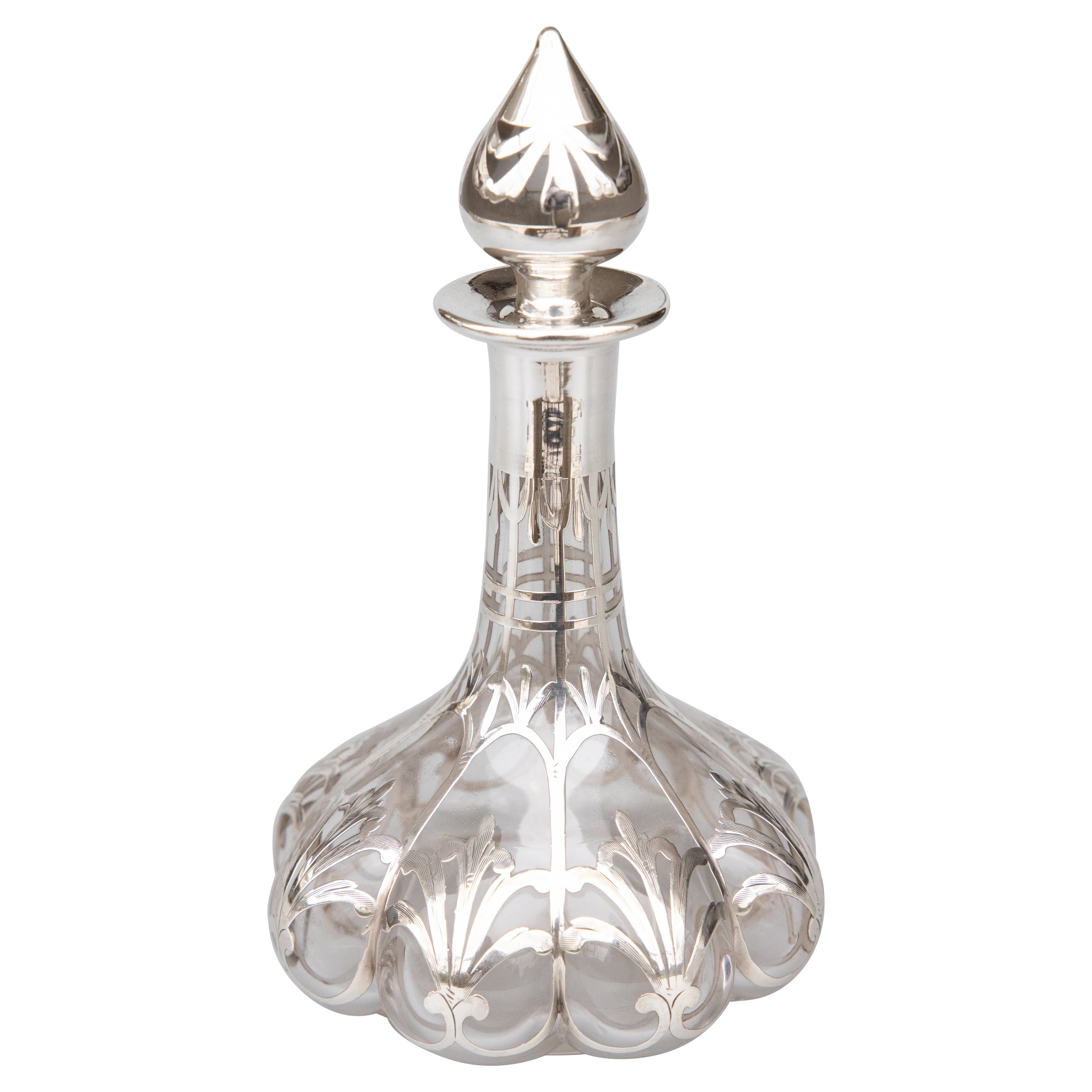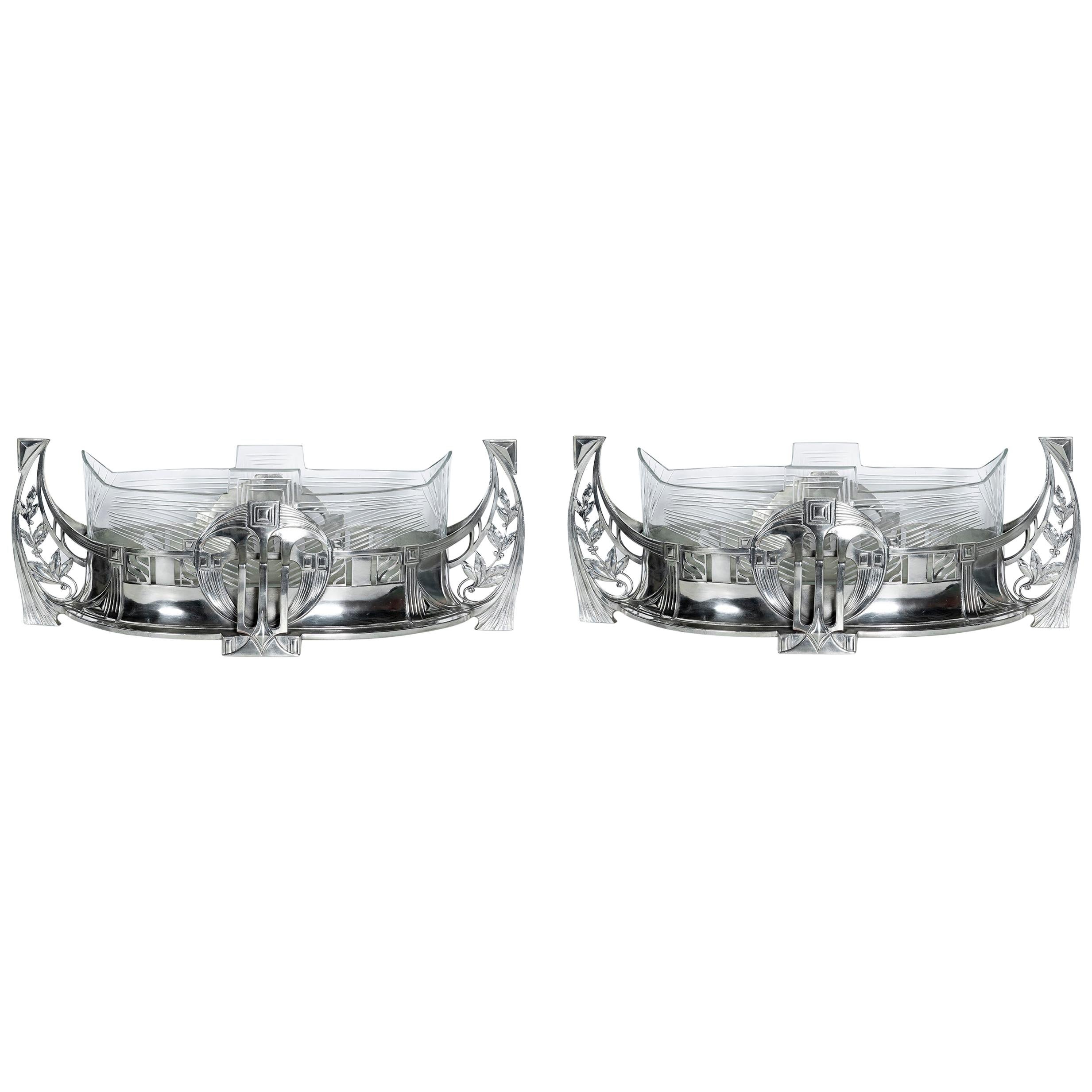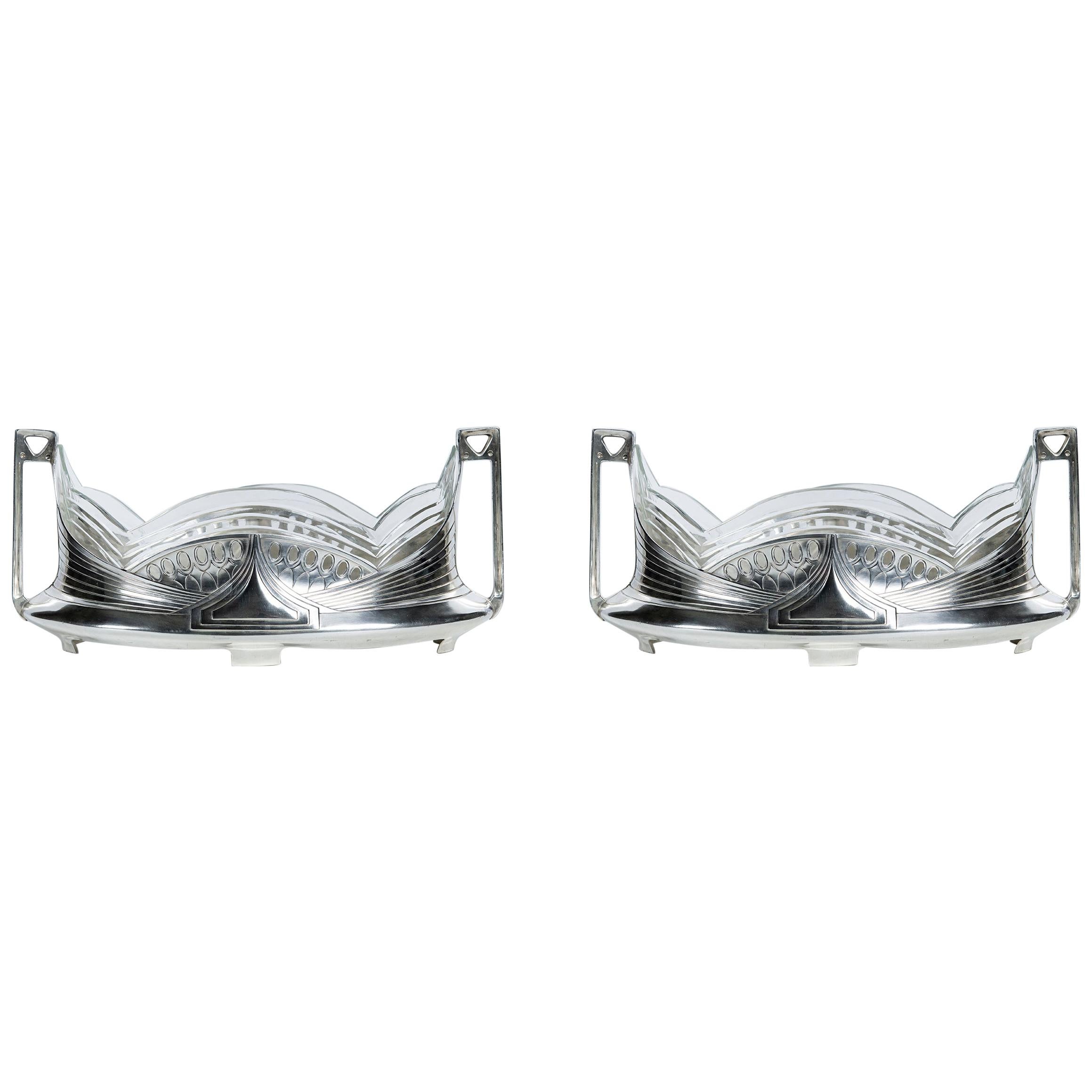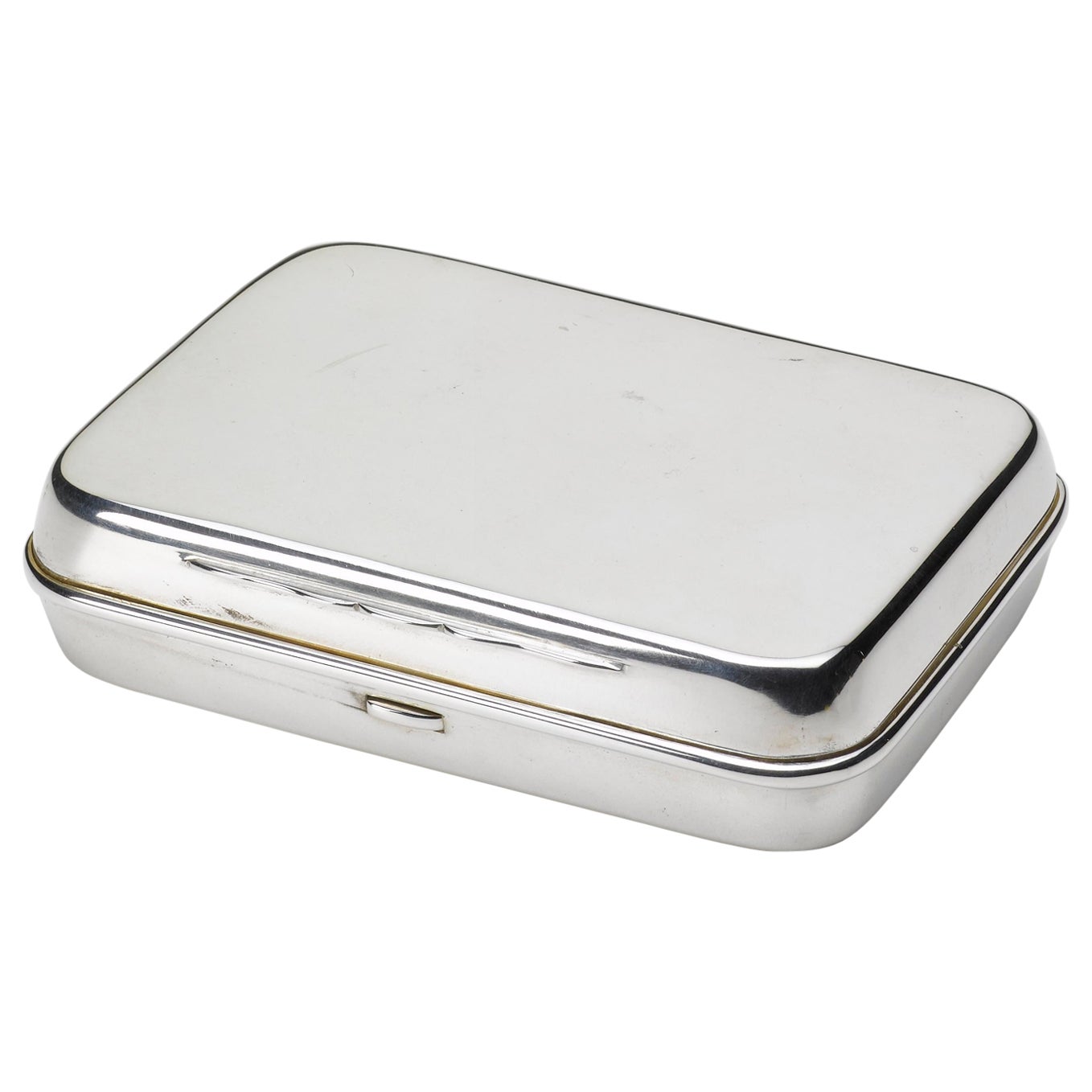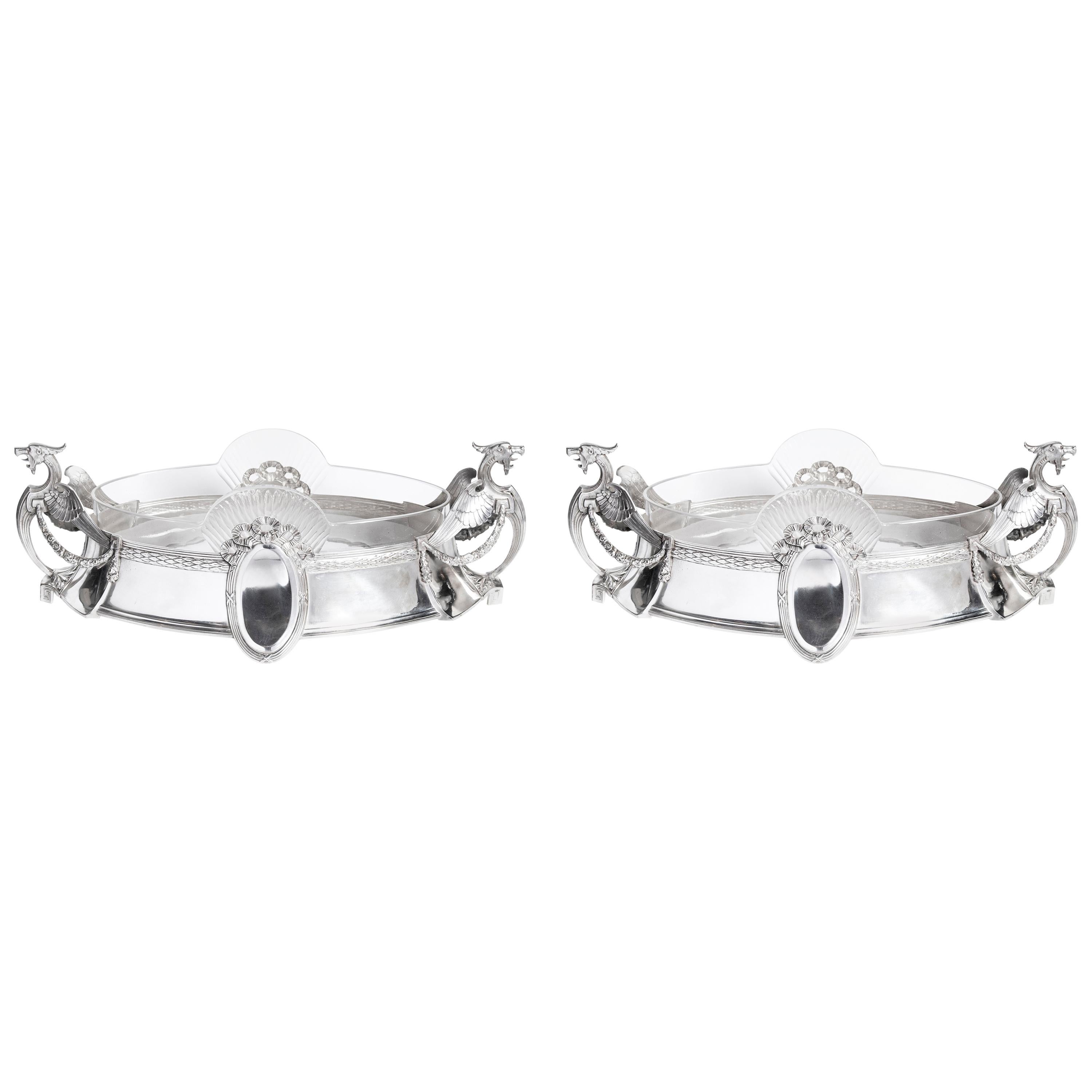Items Similar to Silver Sheffield Cricket Sugar Jar, circa 1900
Want more images or videos?
Request additional images or videos from the seller
1 of 5
Silver Sheffield Cricket Sugar Jar, circa 1900
About the Item
This is an exquisite early 20th century crystal jar with a silver lid and spoon. The lid's top is fashioned after a cricket wicket. The jar sits on a round silver base with decorative crossed cricket bats. There is a silver braided band that encircles the etched crystal jar. The base has three spherical feet.
This is a timeless piece that can be displayed at home or put to use on the dining table. The silver hallmark is visible on the bottom of the base.
The sport of cricket has a known history beginning in the late 16th century. Cricket originated in south-east England. Cricket was prominent in London as early as 1707 and, in the middle years of the century, large crowds flocked to matches on the Artillery Ground in Finsbury. It became the country's national sport in the 18th century. The single wicket form of the sport attracted huge crowds and wagers to match, its popularity continuing throughout the 19th and 20th centuries. It has since developed a global following.
CONDITION:
Good condition. Hallmarked silver at base. Stamped "8847" along with five hallmarks. The jar measures 5" tall and 5" wide at widest point. Spoon measures 6" long.
- Dimensions:Height: 5 in (12.7 cm)Width: 5 in (12.7 cm)Depth: 5 in (12.7 cm)
- Materials and Techniques:
- Place of Origin:
- Period:
- Date of Manufacture:1900-1930
- Condition:Wear consistent with age and use. Overall very good condition. Silver hallmark at bottom.
- Seller Location:Colorado Springs, CO
- Reference Number:
About the Seller
4.9
Platinum Seller
These expertly vetted sellers are 1stDibs' most experienced sellers and are rated highest by our customers.
Established in 2010
1stDibs seller since 2011
402 sales on 1stDibs
Typical response time: <1 hour
- ShippingRetrieving quote...Ships From: Colorado Springs, CO
- Return PolicyA return for this item may be initiated within 10 days of delivery.
More From This SellerView All
- Hallmarked Silver Plated Keepsake Box, Sheffield, UK, circa 1900Located in Colorado Springs, COOffered is a stunning silver plated keepsake box dating to 1900, with associated hallmark. This small box includes a wooden interior with two slots and a blank square on top where initials could have been engraved. A well maintained, elegant piece, this antique silver box is an excellent addition to any silver or home decor collection. Trinket or keepsake boxes have taken on many forms since their first conception in ancient times. However their purpose remains the same; to store jewelry and other items precious to the owner. Originally, these boxes were used specifically for jewelry. These were in common use as early as 5000 BC in Ancient Egypt, when the majority of Egyptians, both male and female, wore jewelry. Boxes were used to keep these gemstone encrusted items safe. In Ancient Rome, jewelry was a status symbol. Rings and brooches were utilized to represent ones status in society. Again, boxes were needed for security and storage purposes. Finding early examples of these are quite rare. Victorian and Edwardian examples of trinket boxes are far more common. This is because owning jewellery was a luxury until the Victorian era- let alone possessing so much a box was needed to store it all. Fine jewelry and other items became available to the masses after the industrial revolution due to the reduction in production costs. This led to a demand for trinket boxes, which were much smaller than jewelry boxes and therefore better suited to the needs of the middle class who did not yet possess an abundance of jewelry. In Victorian households, collectables and other items of interested were also stashed inside these boxes. This is why they are known as trinket or keepsake boxes, rather than just jewelry boxes, although of course jewelry was also stored in them. Trinket boxes were produced in large numbers around this time. Many were lined with colored plush or velvet or rich wood. More elaborate designs had interior divisions and trays for rings and other pieces of jewellery. It was also common to see trinket boxes so small that they could only contain one item, such as a single ring. Ornate exteriors were created to reflect the value of the trinket boxes contents. The Edwardian era saw the introduction of new styles of trinket box. These included small circular or oblong boxes...Category
Antique Early 1900s English Art Deco Decorative Boxes
MaterialsSilver
- Hallmarked Silver Plated Keepsake Box, Sheffield, Uk, Circa 1900Located in Colorado Springs, COOffered is a stunning Sheffield silver keepsake box dating to 1900, with associated hallmark. This small box includes a clean interior and rounded corners. The box is free of names or initials, but would have been used to house keepsakes such as jewelry or cufflinks. A well maintained, elegant piece, this antique silver box is an excellent addition to any silver collection. Trinket or keepsake boxes have taken on many forms since their first conception in ancient times. However their purpose remains the same; to store jewelry and other items precious to the owner. Originally, these boxes were used specifically for jewelry. These were in common use as early as 5000 BC in Ancient Egypt, when the majority of Egyptians, both male and female, wore jewelry. Boxes were used to keep these gemstone encrusted items safe. In Ancient Rome, jewelry was a status symbol. Rings and brooches were utilized to represent ones status in society. Again, boxes were needed for security and storage purposes. Finding early examples of these are quite rare. Victorian and Edwardian examples of trinket boxes are far more common. This is because owning jewellery was a luxury until the Victorian era- let alone possessing so much a box was needed to store it all. Fine jewelry and other items became available to the masses after the industrial revolution due to the reduction in production costs. This led to a demand for trinket boxes, which were much smaller than jewelry boxes and therefore better suited to the needs of the middle class who did not yet possess an abundance of jewelry. In Victorian households, collectables and other items of interested were also stashed inside these boxes. This is why they are known as trinket or keepsake boxes, rather than just jewelry boxes, although of course jewelry was also stored in them. Trinket boxes were produced in large numbers around this time. Many were lined with colored plush or velvet or rich wood. More elaborate designs had interior divisions and trays for rings and other pieces of jewellery. It was also common to see trinket boxes so small that they could only contain one item, such as a single ring. Ornate exteriors were created to reflect the value of the trinket boxes contents. The Edwardian era saw the introduction of new styles of trinket box. These included small circular or oblong boxes...Category
Antique Early 1900s British Art Deco Decorative Boxes
MaterialsSilver
- Silver Plated Airplane-Themed Tableware, circa 1910Located in Colorado Springs, COThis is a beautiful silver-plated egg cup and spoon set with an airplane motif, dating to the early 1910s. The set includes four matching footed egg cups. The cups sit upon the stack...Category
Vintage 1910s English Art Deco Sheffield and Silverplate
MaterialsSilver
- Silver Plated Fishing Reel TrophyLocated in Colorado Springs, COThis silver trophy was designed to celebrate the winner of an angling competition. Three fishing rods with large reels intersect over one another, forming a three-pronged base for the trophy. Looped onto the rods is a wreath, signifying victory for the recipient of the trophy. The chalice of the trophy is clear and nondescript, free of any markings or initials. Well maintained and sturdy, this is an excellent example of antique silver craftsmanship. Sportfishing began in earnest in 15th century England...Category
Early 20th Century Art Deco Sheffield and Silverplate
MaterialsSilver
- Sterling Silver Cricket Trophy, circa 1923Located in Colorado Springs, COThis is a handsome sterling silver trophy dating to circa 1923. Detailed in raised relief on the the goblet-shaped trophy is an energetic cricket scene. It shows a cricket batter as ...Category
Vintage 1920s British Sports Equipment and Memorabilia
MaterialsSterling Silver
- "Three Chiefs, Blackfoot, Montana" by Edward S. Curtis, Platinum Print, 1900By Edward S. Curtis, 1868-1952Located in Colorado Springs, COPresented is a rare, platinum Master Exhibition Print of Edward Curtis’ The Three Chiefs. Typical of Curtis’ Master Exhibition Prints, this platinum print is double-mounted, signed, with an embossed copyright credit and date stamp. His numeric notation “52-00” is in the photographic negative. Curtis photographed The Three Chiefs during his two weeks on a Blackfoot reservation in the summer of 1900. The photograph depicts three Piegan men in traditional dress on horseback, situated next to a small stream with an expansive cloud-filled sky behind them. The Piegans were the largest group in the Blackfoot Confederacy and still retained a majority of their original culture when Curtis visited the tribe. It reportedly took Curtis several days to find the perfect prairie backdrop and riders for this photo, yet his patience paid off. The image was pivotal in enabling Curtis to form his vision for his next project - his ambitious 20 volumes “North American Indian”publication. This print is believed to be one of only three oversized, platinum Master Exhibition Prints of this image in existence. It was printed by Curtis specifically for his East Coast exhibition tour of 1905-1906. Curtis chose only a small number of what he believed to be his finest negatives to produce prints for the show. He never again mounted an exhibition of his work, nor produced such distinctive, large-format platinum prints. “The extraordinary rarity of The Three Chiefs becomes clearer when viewed in the context of other Master Exhibition Prints, principally the 108 in the Peabody Essex Museum in Salem, Massachusetts, the largest collection in existence. The Museum, however, is missing a number of early, iconic images, including The Three Chiefs. It has long been assumed that these missing prints were held elsewhere, possibly in the collection of The New York Public Library. This theory has been substantiated by the Curtis scholar, Bruce Kapson, who unearthed a cache of letters from Curtis to J.P. Morgan and to Morgan's librarian, Ms. Bella da Costa Greene in the Pierpont Morgan Library archives in 2007. The correspondence establishes that 58 of the 100 prints in The New York Public Library's collection are actually Master Exhibition Prints, specifically selected by Curtis for J.P. Morgan as the best examples of his work. A typed letter, dated March 1907, from Ms. Greene to Curtis states: 'I enclose herewith a list of Indian photographs which you sent to Mr. J.P. Morgan'. The letter is accompanied by a handwritten list of 58 photographs, including The Three Chiefs (print number 52.) Morgan donated this group of prints to The New York Public Library in 1912.” (Christie’s Live Auction 1893 Catalog, 2007). Curtis’ platinum prints make up less than 1/2 of 1% of all of the work he created. Curtis’ platinum prints were created only for exhibition or direct sales to patrons and they were always made by Curtis himself. One significant dealer in Curtis prints...Category
Antique Early 1900s American Photography
MaterialsPaper
You May Also Like
- Art Nouveau French Silver Overlay Glass Perfume Bottle, circa 1900Located in Pearland, TXA beautiful antique French silver overlay glass perfume cologne bottle with stopper, circa 1900. It has a gorgeous lobed shape and stylish Art N...Category
Antique Early 1900s French Art Nouveau Bottles
MaterialsSilver
- Pair of W.M.F. Silver Plate Jardinière, Jugendstil Period, circa 1900By WMF Württembergische MetallwarenfabrikLocated in Buenos Aires, Buenos AiresPair of W.M.F. silver plate jardinière with glass, Jugendstil period, circa 1900.Category
Antique Early 1900s German Jugendstil Planters, Cachepots and Jardinières
MaterialsSilver Plate
- Pair of W.M.F. Silver Plate Jardinière, Jugendstil Period, circa 1900By WMF Württembergische MetallwarenfabrikLocated in Buenos Aires, Buenos AiresPair of W.M.F. silver plate jardinière with glass, Jugendstil period, circa 1900.Category
Antique Early 1900s German Jugendstil Planters, Cachepots and Jardinières
MaterialsSilver Plate
- Pair of W.M.F. silver plate jardinière with glass. Germany, circa 1900.By WMF Württembergische MetallwarenfabrikLocated in Buenos Aires, Buenos AiresPair of W.M.F. silver plate jardinière with glass. Germany, circa 1900.Category
Antique Early 1900s German Neoclassical Planters, Cachepots and Jardinières
MaterialsSilver Plate
- Fabulous Hand Chased English Sheffield Silver Plate Trophy or Loving CupBy Martin, Hall & Co. Ltd.Located in Charleston, SCFabulous antique English Sheffield silver plate trophy or loving cup with exceptional crisp hand chasing on cup and on base. Two large cartouches on either side suitable for engravin...Category
Antique Mid-19th Century English Sheffield and Silverplate
MaterialsSilver Plate
- Late 19th Century Blue Opaline Sheffield Silver Sugar BowlLocated in Haddonfield, NJEnglish Sugar or Candy Bowl in Silver-Plate and Blue Opaline Glass, circa 1880-1900. The Sheffield Silver base has an amazing pearl string handle.Category
Antique Late 19th Century English Late Victorian Sheffield and Silverplate
MaterialsSilver Plate
Recently Viewed
View AllMore Ways To Browse
Antique Sugar
Silver Sugar Spoon
Antique Country Kitchen Table
Silver Lidded Sugar
Cricket Antique
Sugar Table
Cricket Tables
Cricket Table
Country Sport
Antique Silver Table Spoons
Glass Round Kitchen Dining Table
Antique Cricket Table
Antique Cricket Tables
Antique Cricket Table Tables
Cricket Table Antique
Cricket Table Antique Furniture
Antique Glass Jar Lids
Antique Silver Sugar Spoons
